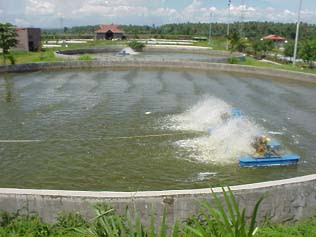The business of raising Tilapia does not involve growing the fingerlings to marketable size alone. Another profit center in this enterprise that can even be more profitable is the hatchery and nursery operations. The higher profitability of these operations relies on the fact that the feed input is much less than the grow-out operations. Furthermore, in terms of the turn-over rates, the hatchery operations takes only about a week while the nursery operation takes about one month as compared to the four to five months it will take before the marketable sized fish is sold.
Similar to the grow-out culture, the hatchery and nursery of tilapia in tanks offers a solution to increased production at a limited space as compared to the traditional pond and cage culture systems. It also minimizes the risk of crop loss due to typhoons and inundation. Furthermore, intensification of culture means less exploitation of the area and more effective management and controlled operation. It is envisioned that it is only through the tank system that aquaculture can be “industrialized” by providing better control and predictable production levels.









